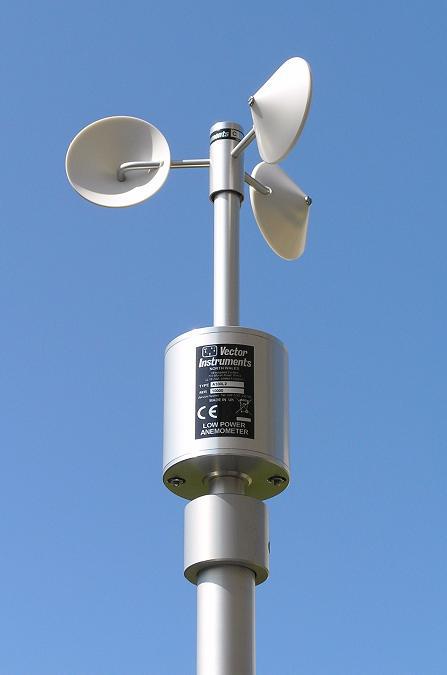All You Required to Know Concerning Anemometers: Exactly How They Work, Why They Matter, and Where to Utilize Them
Anemometers, however typically ignored in the realm of clinical tools, play an important duty in different fields, providing useful understandings right into wind speed and air flow patterns. As we dig right into the ins and outs of anemometer technology, we will uncover the internal workings of these devices, their importance, and the essential considerations when choosing the appropriate anemometer for details applications.

Anemometer Essentials
An important tool made use of to measure wind rate and direction, the anemometer plays a vital duty in weather forecasting and various sectors. An anemometer usually is composed of 3 or 4 mugs that revolve in the wind, a vane that aims into the wind, and sensing units to track the activities or rotations.
There are various types of anemometers readily available, consisting of mug anemometers, vane anemometers, hot-wire anemometers, and sonic anemometers, each with its unique functions and applications. Mug anemometers are commonly utilized for fundamental wind rate dimensions, while vane anemometers are chosen for directional measurements.
Principles of Anemometer Operation
Building on the foundational understanding of anemometer essentials, the concepts of anemometer operation illuminate the auto mechanics behind wind speed and instructions dimensions. Anemometers operate the principle of air flow affecting a sensor, triggering it to revolve. Mug anemometers, for example, have 3 or even more cups that record the wind, causing them to rotate quicker as the wind speed increases. The turning rate is after that converted right into a wind speed dimension. Vane anemometers, on the other hand, make use of a tail or a probe that straightens itself with the wind direction, providing a dimension of wind instructions based on the alignment of the sensing unit. Hot-wire anemometers count on a heated wire that cools down as wind overlooks it, with the price of cooling identifying the wind rate. Ultrasonic anemometers procedure wind rate and direction by analyzing the time it considers ultrasonic signals to travel in between transducers. Recognizing these principles is vital for exact and reputable wind dimensions in different applications.
Relevance of Anemometers
Anemometers play an essential role in measuring wind speed and instructions, offering important data for weather forecasting, environment studies, ecological surveillance, and aeronautics operations. Meteorologists rely on anemometers to collect precise wind data, aiding them comprehend weather patterns, predict storms, and concern timely cautions to the public. Wind ranch operators utilize anemometers to evaluate wind problems and take full advantage of electrical energy production from wind turbines.
Applications Across Various Industries
Applications of anemometers this page span throughout diverse sectors, showcasing their versatility and utility past meteorology. In the renewable resource market, anemometers play a critical function in analyzing wind conditions for wind ranch positionings, making certain ideal power production. Industries like construction and mining utilize anemometers to keep track of wind speeds, critical for security methods, particularly when functioning at elevations or in open-pit mines where solid winds can position risks. Anemometers are also indispensable in the aviation market, assisting pilots in recognizing airspeed and wind direction for secure take-offs and landings. The maritime field gain from anemometers for ship navigating, helping sailors prepare for weather condition adjustments and adjust routes appropriately. In farming, anemometers help farmers in taking care of crop spraying by giving real-time information on wind rate to avoid drift. Moreover, anemometers find applications in HVAC systems to enhance air flow and boost power effectiveness in structures. The diverse usage instances of anemometers emphasize their importance across numerous markets, highlighting their indispensable role in boosting operational safety and efficiency (anemometer).

Picking the Right Anemometer for Your Requirements
For basic objectives, a mug anemometer is ideal for gauging wind speed, while a vane anemometer provides wind direction information. Hot-wire anemometers are excellent for low airspeed measurements, and ultrasonic anemometers offer high accuracy and durability.

Verdict
In conclusion, anemometers play a crucial function in gauging wind rate and instructions across different sectors. It is important to take into consideration the importance of anemometers in order to make enlightened wikipedia reference choices when picking the most ideal tool for measuring wind conditions.
There are various types of anemometers offered, including mug anemometers, vane anemometers, hot-wire anemometers, and sonic anemometers, each with its one-of-a-kind features and applications. Cup anemometers are commonly used for fundamental wind rate measurements, while vane anemometers are liked for directional dimensions. Hot-wire anemometers are appropriate for low airspeeds, and sonic anemometers are excellent for high-precision measurements in research and commercial settings.Building on the foundational understanding of anemometer basics, the principles of anemometer operation illuminate the auto mechanics behind wind rate and instructions measurements. For basic purposes, a mug anemometer is ideal for gauging wind rate, while a vane anemometer offers wind instructions information.
Comments on “Expert Tips for Calibrating Your Anemometer for Optimum Efficiency”